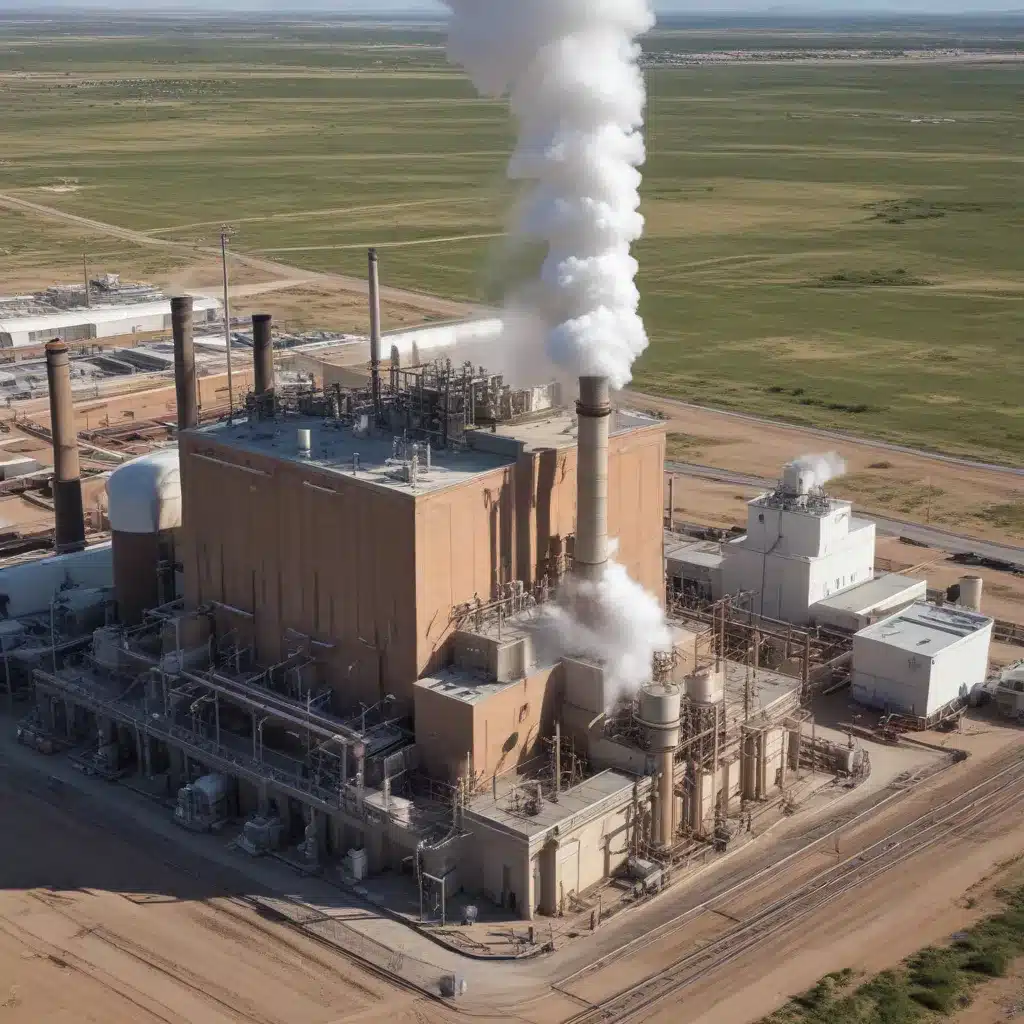
The Shifting Sands of Power Generation
The Four Corners Steam Plant, nestled in the heart of the Navajo Nation in New Mexico, has long been a fixture in the regional power landscape. As one of the largest coal-fired power stations in the United States, it has played a crucial role in meeting the energy demands of Arizona, New Mexico, and beyond. However, the tides are turning, and the future of this aging giant is uncertain.
A Contested Legacy
The Four Corners Steam Plant has been the subject of intense scrutiny and debate in recent years. Environmental advocates have long criticized the plant’s significant contribution to air pollution, with the facility being the largest single source of nitrogen oxides in the country. The Sierra Club and other organizations have taken legal action against the Environmental Protection Agency (EPA), urging stricter regulations and pollution controls to safeguard the health of local communities.
“This whole area has been utilized for thousands of years by indigenous people. This is where people have buried kin.” – Mr. Bartlett, Energy Minerals Law Center
The plant’s location on Navajo land has also raised concerns about the impact on cultural and environmental resources. The nearby Navajo mine, which feeds the Four Corners Generating Station, has faced legal challenges over its expansion plans, with the courts calling for a more thorough review of the project’s impact on the environment and cultural sites.
Navigating Regulatory Hurdles
As the renewable energy revolution continues to gain momentum, the Four Corners Steam Plant has found itself in an increasingly precarious position. In 2010, the California Public Utilities Commission signaled that it would no longer allow investments in the plant after 2012, citing the state’s Emissions Performance Standard. This law effectively prohibited new ownership investments in power plants that failed to meet minimum performance standards for carbon emissions.
Similarly, in 2018, the New Mexico Public Regulation Commission accepted a plan by the Public Service Company (PNM) of New Mexico to close the Four Corners Power Plant by 2031, shifting towards renewable energy, fossil gas, and nuclear power. However, the utility’s recent attempt to transfer its share of the plant to the Navajo Transitional Energy Company (NTEC) was rejected by regulators, who cited the lack of a clear plan for replacement resources.
“The decision by the New Mexico Public Regulation Commission (PRC) was ‘disconcerting,’ PNM said in a statement, as selling its share of the plant would have saved customers up to $300 million and helped the utility abandon coal generation almost seven years ahead of current plans.”
These regulatory hurdles have created a complex and uncertain future for the Four Corners Steam Plant, as utility companies and stakeholders navigate the transition towards a more sustainable energy mix.
Charting a New Course
As the future of the Four Corners Steam Plant hangs in the balance, innovative solutions are emerging to address the challenges and chart a new course for the region’s power generation.
Embracing Renewable Energy
One of the most promising developments is the growing investment in renewable energy sources. Arizona Public Service Company (APS), a major owner and operator of the Four Corners Power Plant, has announced plans to move towards operating the plant seasonally starting in the fall of 2023, subject to necessary approvals. This shift towards seasonal operation could pave the way for an increased reliance on renewable energy sources, such as solar and wind, to meet the region’s power needs.
Moreover, the Navajo Transitional Energy Company (NTEC) has received a $6.55 million grant from the Department of Energy to conduct a feasibility study on implementing carbon capture and storage (CCS) technology at the Four Corners plant. If successful, this innovative approach could extend the plant’s lifespan beyond 2031, while reducing its environmental impact.
“The feasibility study was expected to be completed in 2025.”
Prioritizing Community Engagement
Alongside the technological solutions, community engagement and advocacy have become crucial in shaping the future of the Four Corners Steam Plant. Environmental groups, such as the Sierra Club and the San Juan Citizens Alliance, have played a pivotal role in pushing for stricter regulations and cleaner energy alternatives.
The plant’s location on Navajo land has also highlighted the importance of incorporating indigenous perspectives and ensuring the protection of cultural resources. Ongoing dialogue and collaboration between utility companies, regulators, and local communities will be essential in crafting a sustainable and equitable energy future for the region.
Toward a Resilient Energy Future
As the Southwest navigates the transition away from coal-fired power, the Four Corners Steam Plant stands as a microcosm of the broader challenges and opportunities facing the region. By embracing renewable energy, exploring innovative technologies, and prioritizing community engagement, stakeholders can work towards a more resilient and sustainable energy future that balances the needs of the environment, the economy, and the people.
The path forward may not be easy, but the lessons learned from the Four Corners Steam Plant can inform and inspire similar efforts across the nation, as communities strive to chart a new course in the evolving energy landscape.
To stay up-to-date on the latest developments and advocacy efforts related to the Four Corners Steam Plant, be sure to visit the Joint Action for Water website. There, you can find valuable resources, connect with like-minded individuals, and participate in shaping a brighter energy future for the Southwest.

